How to Work with Video Subtitles in VSDC
Subtitles are an easy way to make your videos more accessible – especially if you’re publishing content for a wide audience on social media. VSDC Video Editor allows you to add subtitles to your footage for free, or even manually create them right in the program if you don’t have the transcript.
In the tutorial below, we’ll walk you through the process of adding subtitles to the video, explain how to use markers for synchronizing subtitles with narration, and show you how to adjust the look of the subtitles using a basic text formatting menu.
Feel free to watch the video tutorial first, and then jump to the text version.
Step 1. Add or create subtitles
First things first, add your footage and subtitles to the scene. To add the footage, use the Import content button on the start screen. To add the subtitles, you can use two options, depending on whether you have a premade subtitle file or not.
If you have an .srt file with subtitles
Importing a transcript file to VSDC is the easiest way to create subtitles. However, for the program to recognize the file, it has to be in .srt format.
You can create .srt files using the Notepad text editor or dedicated freeware, such as Open Subtitle Editor or Jubler. If you’re downloading subtitles from YouTube, the text file will be already in the .srt format.
So, if you have the file ready, hit the CC button on the left-hand side and proceed to upload the subtitles.
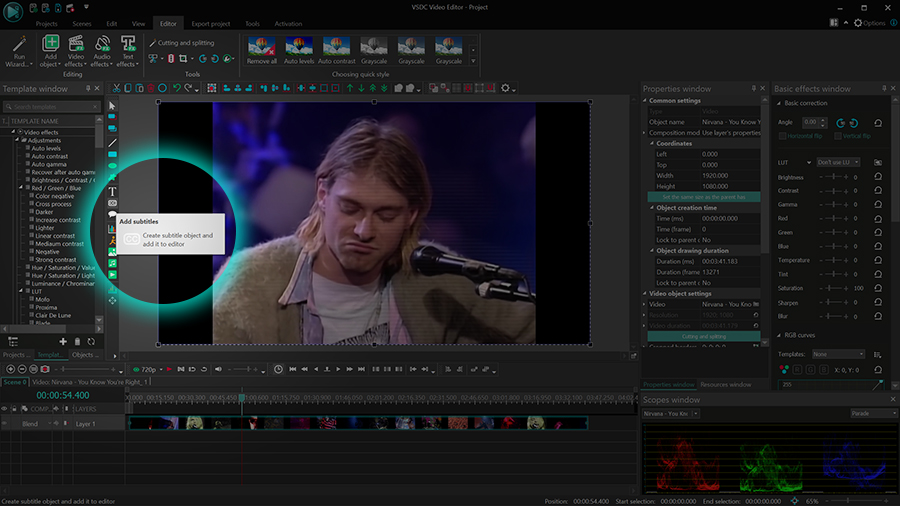
In the pop-up Object position settings window, click OK and then select the place for the subtitles on the scene. Once you do that, the file will instantly appear on the timeline, and the subtitles will start displaying.
If you don’t have an .srt file with subtitles
If you don’t have the file ready, you can create subtitles right in the program. Just hit the CC button on the left, select Cancel when the program suggests uploading a file, and hit OK in the Object position settings window. Then manually select the place for subtitles on the scene and hit Edit subtitles.
From there, you’ll need to manually add subtitles, phrase by phrase, using the following format:
The first line indicates the subtitle order number. The second line contains the exact moments when the subtitle appears on the screen and disappears from it. The third line contains the actual text of the subtitle. Keep in mind that if you decide to prepare a transcript file in advance, you’ll have to follow the same format.
Step 2. Add subtitle markup and adjust it, if needed
To make working with subtitles easier, VSDC brings the subtitle markup feature. This feature adds markers to the subtitles file on the timeline to indicate the beginning of each subtitle. The markup comes in handy when you need to synchronize a video, sound, or effect with the narration.
To activate the markup feature, select the subtitles on the timeline and go to the Properties window on the right. Then hit Add markers. This is what the result will look like:
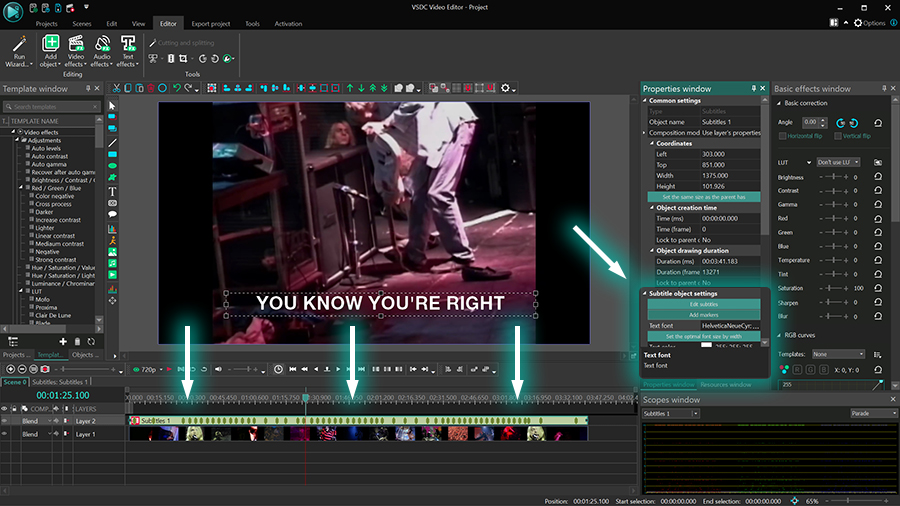
Adjust markers’ position
If you’ve noticed that the subtitles in the video are displayed with the wrong timing, or the text is off, head over to the Edit subtitles menu on the right.
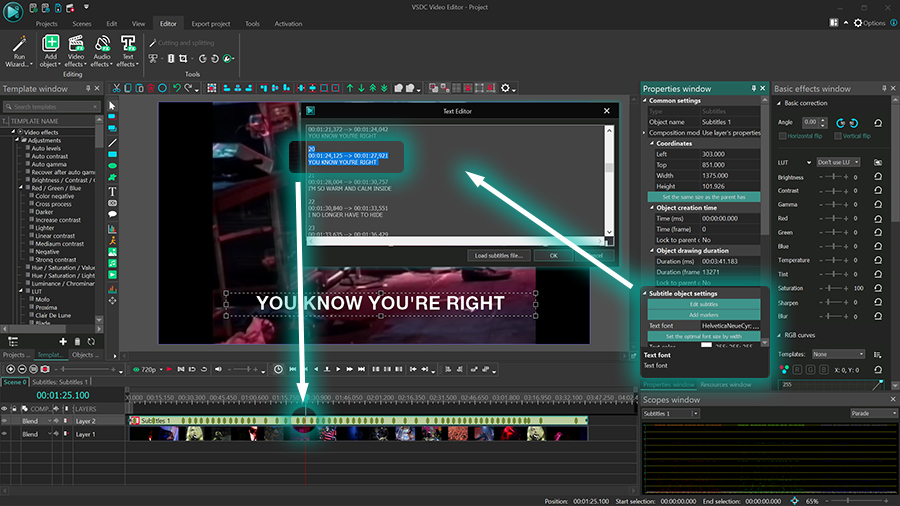
To change the text, select the incorrect piece and start typing over. To change the timing, find the moments it should appear and disappear (use the top left corner of the timeline for that) and adjust the time stamps in the editor accordingly.
Make sure you always stick to the default timing format when adjusting the timestamps: XX:XX:XX,XXX → XX:XX:XX,XXX. Otherwise, the subtitles won’t be displayed.
Once finished, click OK and hit the Add markers button once again – to reflect the latest adjustments.
Set up the appearance of individual markers
In addition to changing the position of the markers on the timeline, you can also change their colors and add tooltips to selected markers. To get started, double-click on the layers with subtitles; then double-click the marker you’d like to work with to open its settings.
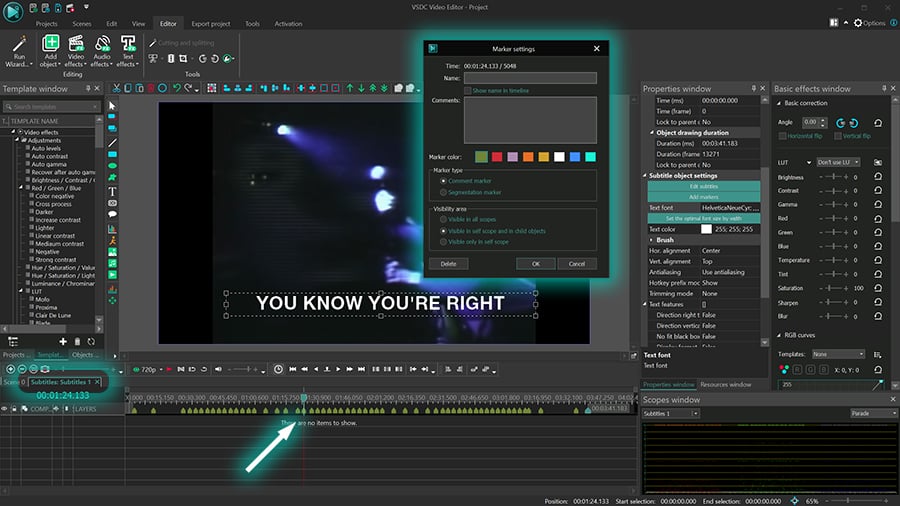
Using the Marker settings window, you can do the following:
- Name the marker
- Add a comment to the marker
- Change the color of the marker
- Change the marker type
- Change the marker visibility
The first three options allow you to make markers more informative. For example, the name of the marker and the comments will be visible if you hover over it on the timeline (to make the name visible at all times, check the box saying Show name in timeline). If you change the color of the marker, it will be visible on all timeline layers, at all times.

The next option in the menu, called Marker type, allows you to use selected markers for splitting the video into parts. For instance, if you switch from Comment marker to Segmentation marker and proceed to export your video, you can select the “Split by markers” checkbox and the project will be saved into multiple videos, based on the number of segmentation markers you’ve created.
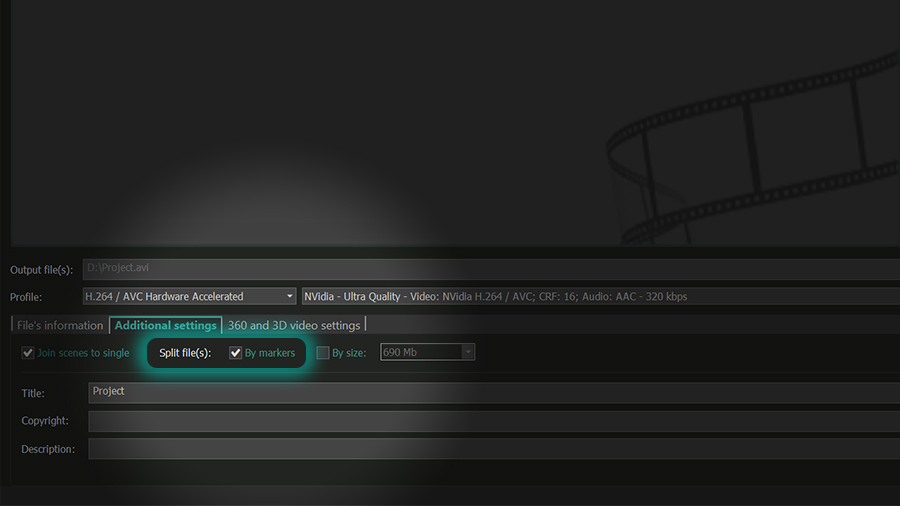
Finally, the marker editing menu allows you to set Visibility area. Visibility area defines the levels on the timeline where the marker (along with its name and comments) will be visible.
There are three visibility levels you can choose from:
- Visible on all scopes – the marker will be visible on all timeline levels
- Visible in self scope and child object – the marker will be visible on the current level and all levels below
- Visible only in self scope – the marker will only be visible on the current level
For example, if you make the marker visible above the timeline on all scopes, you can go back to the main timeline tab and view it there.

Meanwhile, with the other two options, the markup will only be visible on the subtitle layer.
Step 3. Format the subtitles
Now that you know how to create subtitles for your videos and how to work with the markup, let’s see how you can adjust subtitle text formatting. For example, you can adapt the size of subtitles to the width of the video, change text color, font, alignment, and other parameters. You can also add a background to the text and select its color!
Feel free to play around to achieve the desired look of the subtitles.
It’s time to start adding subtitles to all your videos
We can’t stress this enough, but having good-quality subtitles is essential. Subtitles make your videos accessible to hearing-impaired viewers, help you deliver your message to those watching videos without sound, and overall show that you care about your audience. If you create content for social media or for a wide offline audience, subtitles should be an integral part of your videos. And the best part? With VSDC, you can add them to your videos for free.
Have any questions? Feel free to email us at This email address is being protected from spambots. You need JavaScript enabled to view it. or DM us on Facebook.
Get VSDC Free Video Editor - powerful non-linear editing software with advanced features. Perfect for YouTube creators, social media videos, and professional projects. Learn more about features.